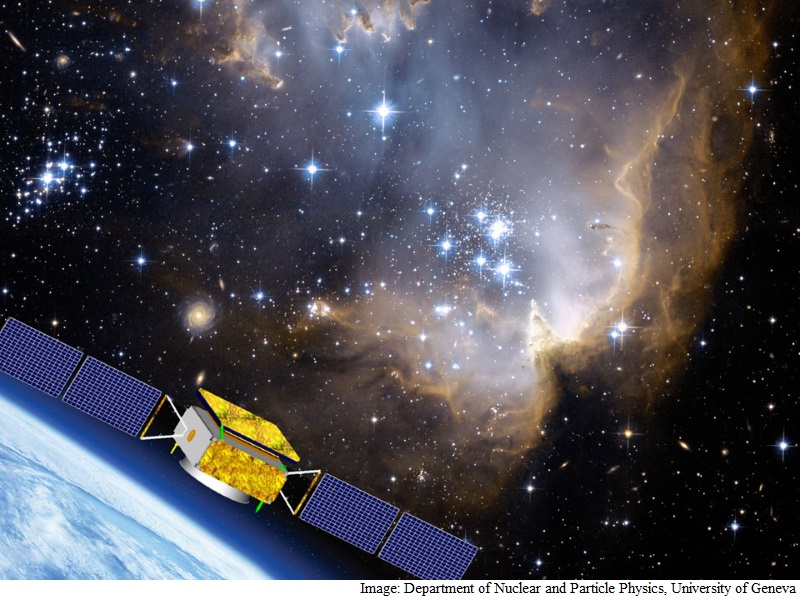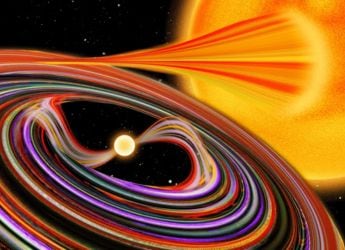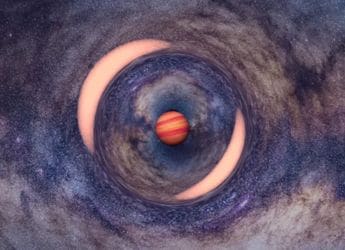- Home
- Science
- Science News
- China Launches Its First Dark Matter Satellite
China Launches Its First Dark Matter Satellite

The DAMPE satellite, nicknamed "Wukong" after the Monkey King with penetrating eyes in the Chinese classical fiction "Journey to the West", blasted off on Thursday morning on a Long March 2-D rocket from the Jiuquan Satellite Launch Centre in Gansu province, Xinhua news agency reported.
It will enter a sun-synchronous orbit at a height of 500 km to observe the direction, energy and electric charge of high-energy particles in space.
From there, scientists hope the 1.9-tonne desk-sized satellite could help lift the "invisible cloak" on the dark matter and shine more light on the hypothetical mass.
With the new DAMPE satellite, scientists will look for evidences of dark matter annihilation or decay.
Wukong will scan the space in all directions in the first two years and focus on sections where dark matter are most likely to be observed afterwards.
More than 100 scientists will study the data sent back by Wukong. Initial findings are expected to be published in the second half of 2016.
Dark matter, which does not emit or reflect enough electromagnetic radiation to be observed directly, is one of the huge mysteries of modern science.
Theorised by scientists who could not understand missing mass and strangely bent light in faraway galaxies, dark matter has become widely accepted in the physics community even though its existence has never been concretely proven.
Scientists now believe only around five percent of the total mass-energy of the known universe are made up of ordinary matter, whereas dark matter and dark energy make up the rest.
Knowing more about dark matter could hence give humanity a clearer idea about the past as well as future of galaxies and the universe, and will be revolutionary for the world of physics and space science.
Catch the latest from the Consumer Electronics Show on Gadgets 360, at our CES 2026 hub.
Related Stories
- Samsung Galaxy Unpacked 2025
- ChatGPT
- Redmi Note 14 Pro+
- iPhone 16
- Apple Vision Pro
- Oneplus 12
- OnePlus Nord CE 3 Lite 5G
- iPhone 13
- Xiaomi 14 Pro
- Oppo Find N3
- Tecno Spark Go (2023)
- Realme V30
- Best Phones Under 25000
- Samsung Galaxy S24 Series
- Cryptocurrency
- iQoo 12
- Samsung Galaxy S24 Ultra
- Giottus
- Samsung Galaxy Z Flip 5
- Apple 'Scary Fast'
- Housefull 5
- GoPro Hero 12 Black Review
- Invincible Season 2
- JioGlass
- HD Ready TV
- Laptop Under 50000
- Smartwatch Under 10000
- Latest Mobile Phones
- Compare Phones
- Motorola Signature
- Vivo Y50e 5G
- Vivo Y50s 5G
- Realme 16 Pro+ 5G
- Realme 16 Pro 5G
- TCL Nxtpaper 70 Pro
- OPPO A6 Pro 5G
- Honor Power 2
- Lenovo Yoga Slim 7x (2025)
- Lenovo Yoga Slim 7a
- Realme Pad 3
- OPPO Pad Air 5
- Xiaomi Watch 5
- Huawei Watch 10th Anniversary Edition
- Acerpure Nitro Z Series 100-inch QLED TV
- Samsung 43 Inch LED Ultra HD (4K) Smart TV (UA43UE81AFULXL)
- Asus ROG Ally
- Nintendo Switch Lite
- Haier 1.6 Ton 5 Star Inverter Split AC (HSU19G-MZAID5BN-INV)
- Haier 1.6 Ton 5 Star Inverter Split AC (HSU19G-MZAIM5BN-INV)

















